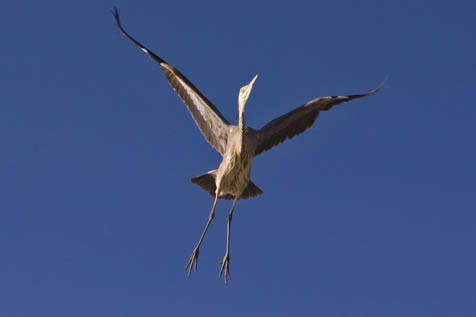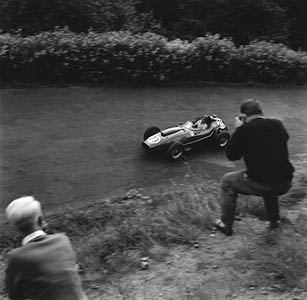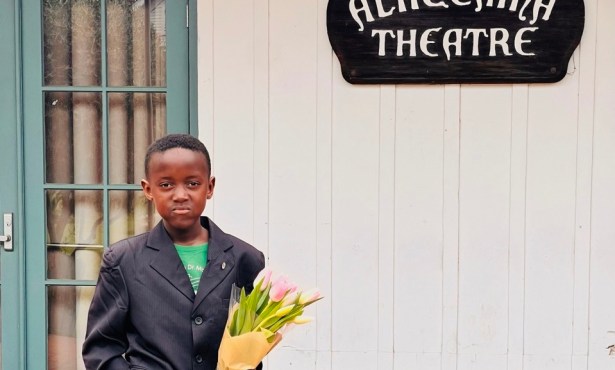Jesse Alexander’s Photography.
At Patty Look Lewis Gallery. Shows through July 28.

Jesse Alexander is a jewel in Santa Barbara’s fine art lineage, with a successful photography career and a body of work that span decades. As a complement to the Santa Barbara Museum of Art’s current Made in Santa Barbara exhibit featuring the work of more than 40 area photographers, the Patty Look Lewis Gallery offers a modest but revealing show of Alexander’s iconic racecar images from the 1950s and ’60s alongside his more recent ventures into nature photography. The result is an appealing glimpse into one artist’s journey from cultural investigator to introspective observer.

Although the show’s abrupt change in subject matter and era from one side of the gallery to the other is somewhat distracting, the exhibition nevertheless highlights the crux of Alexander’s artistic impulse: an obsession with motion. Whether photographing cars in the middle of the track at the Grand Prix in Monza, Italy, or the majestic Great Blue Heron in midflight against a piercing cerulean sky, Alexander’s eye for capturing movement is uncanny in its precision. Even with the lack of high-speed digital photography in his earlier work, Alexander seems to possess the preternatural ability to stop time. In his photo of racecar driver Phil Hill speeding around a curve at the Grand Prix in Germany, for example, the photographer captures the car and driver in perfect focus, while onlookers stand by in a fuzzy haze. It is this contradictory effect that makes his work so compelling; objects in motion appear almost stationary in their clarity, while stationary objects look as if they are whizzing by the camera.
Alexander’s racing photographs, printed lovingly with silver gelatin, evoke nostalgia for motor sports in their heyday. More than historical records, his images capture the glamour of mid-20th century racecar driving, a sport that seems romantic in comparison to its contemporary counterpart, NASCAR, with its endorsements and commercialization.
Across the gallery space-and geographically halfway around the world-Alexander’s riveting photographs of the beaches of Carpinteria are equally persuasive. His lens turned on the natural world that surrounds his home, Alexander’s eye remains trained on movement: Even when at rest, the indigenous birds framed by his careful compositions appear on the verge of takeoff. Their flight seems as inevitable as the start of a race, only this time, without the promise of a finish line.



